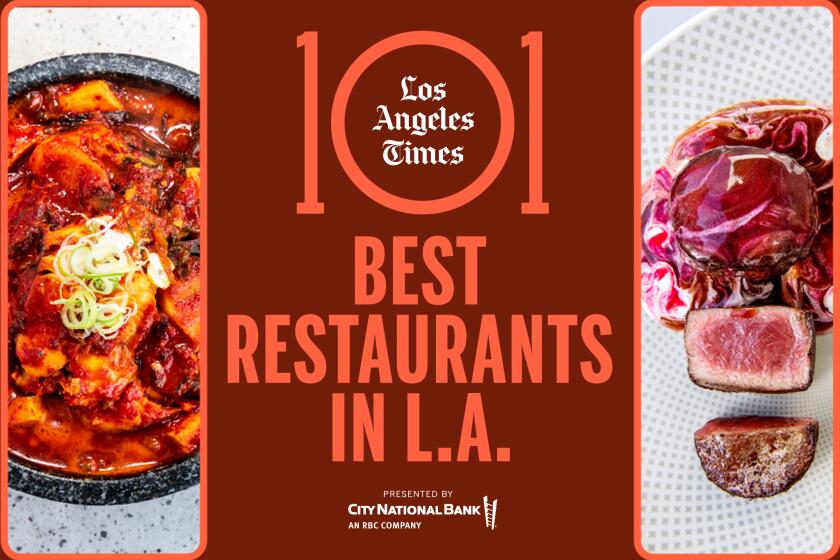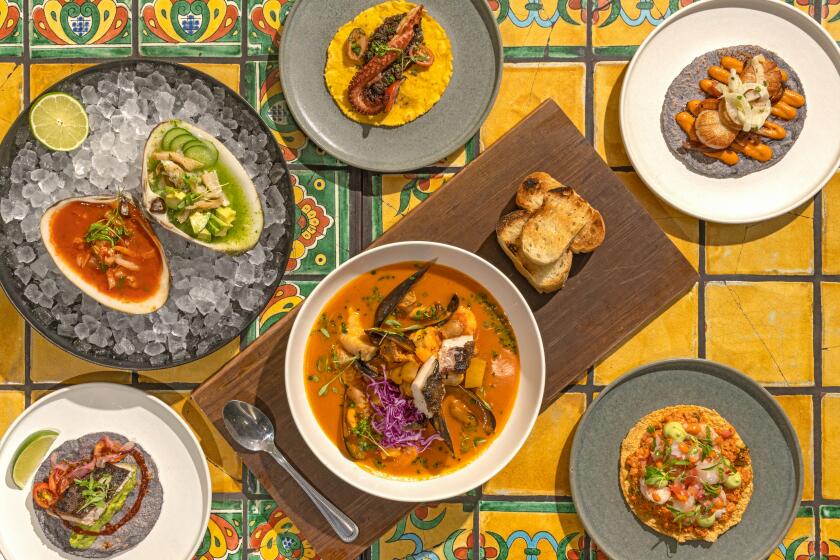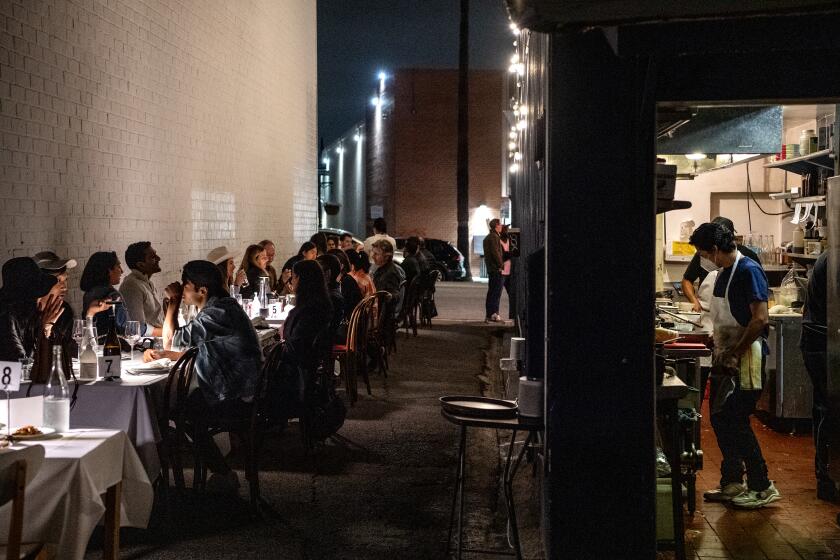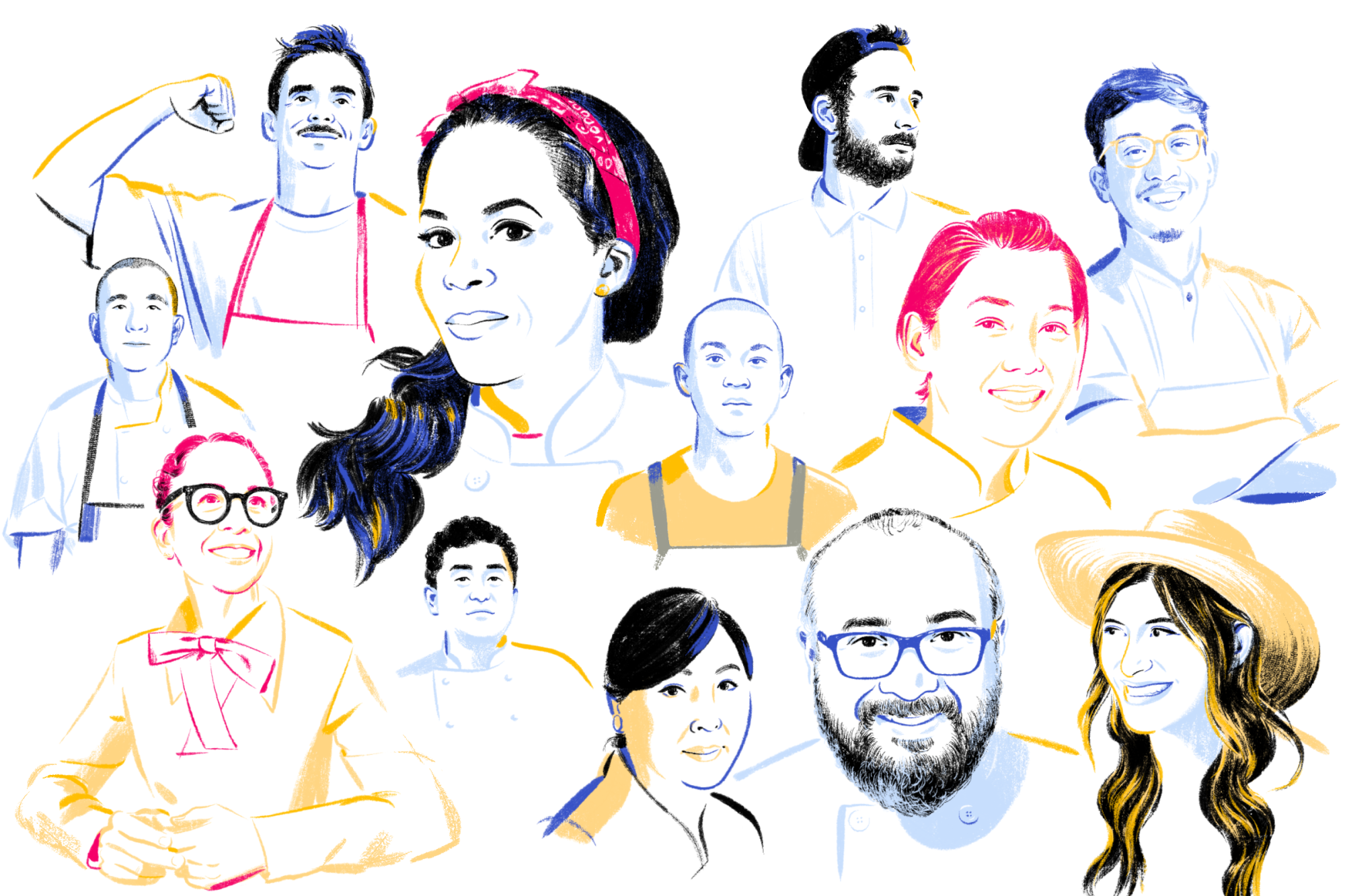
It’s never been easy to define a regional style of cooking for Southern California. That’s one of the joys of living and eating here. Everyone is free to explore their own vision while having access to some of the world’s best produce and a wealth of global cultures.
Consider that at any given moment in the city, Los Angeles cuisine might take the form of Avish Naran and Miles Shorey‘s dosa onion rings with mango chutney at Pijja Palace, Katianna and John Hong‘s matzoh-filled mandu at Yangban Society, Junya Yamasaki‘s tonkatsu-chicken Kiev mashup in the form of a breaded meatball at Yess, Jon Yao’s exciting fine-dining transformations at Kato of San Gabriel Valley family Taiwanese food, Miles Thompson‘s pickled zucchini tonnato at his just-concluded pop-up Baby Bistro (and perhaps at his planned Echo Park follow-up), Teresa Montaño‘s fideuà negra at Otoño, Charles Namba’s Japanese latkes at Tsubaki, John Cleveland‘s jerk catfish at Post & Beam, Victor Villa‘s “estilo Los Angeles” queso tacos at Villa’s Tacos, Nancy Silverton and Elizabeth Hong’s delicately fried pig trotter patty with frisée and sliced pluots at Osteria Mozza, or Alfonso “Poncho” Martinez‘s folded and meat-filled Oaxacan tlayudas grilled over live fire at Poncho’s Tlayudas. And that barely scratches the surface of the diversity appearing on L.A. tables.
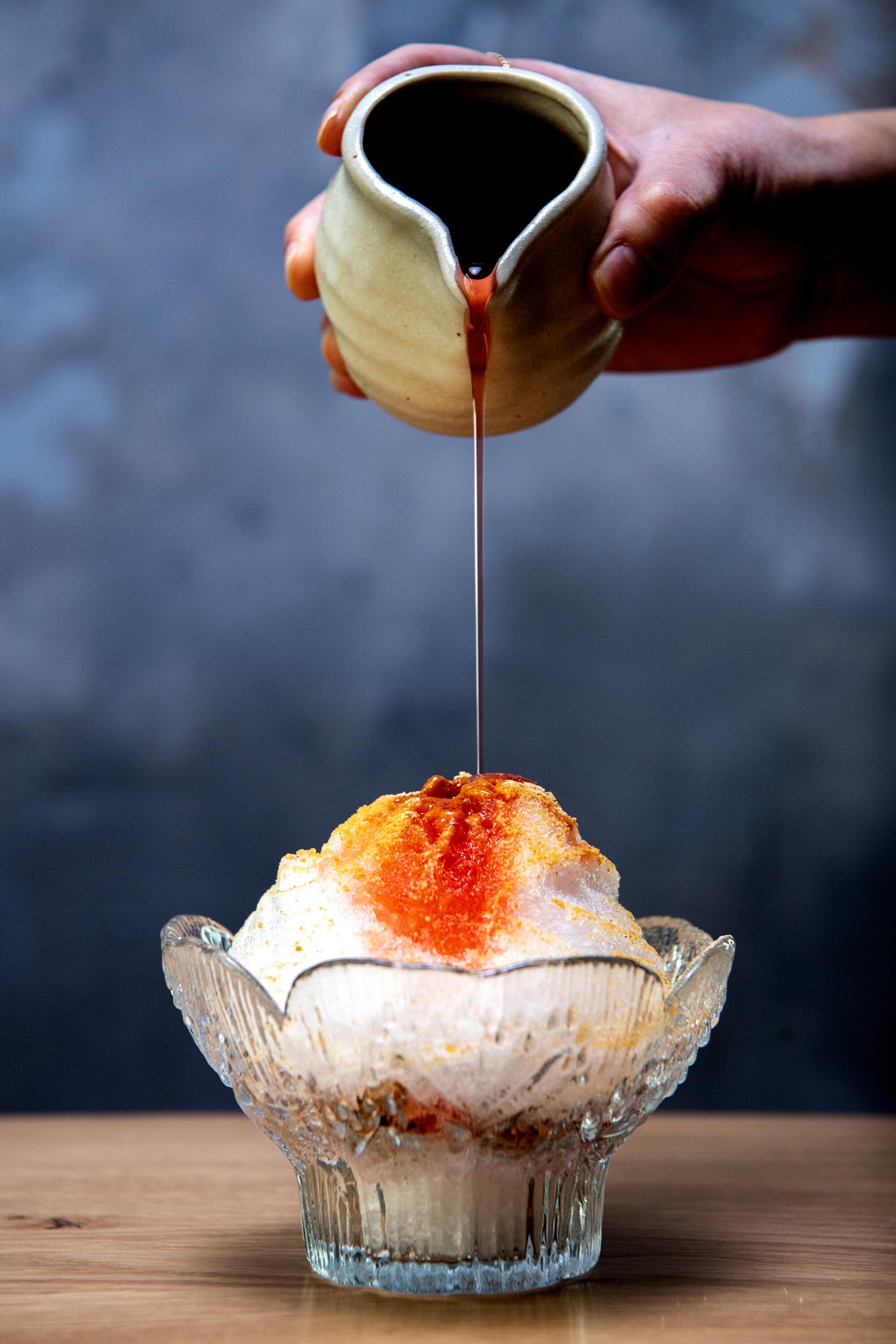
Far-reaching global flavors in L.A. cuisine grew in importance during the 1970s and ’80s when Los Angeles was emerging from the Euro-centric, flambé-loving Continental cuisine era. Not only were professionally trained (and mostly white) chefs bringing ideas from their travels around the world but we also benefited from first-generation immigrant cooks arriving in the U.S. as they always had, this time in numbers that allowed them to establish restaurants for their own communities (and anyone else who wanted to join in) rather than for the presumed toned-down tastes of the “American palate.”
Things got even more interesting when the next generation came of age, children of immigrants steeped not only in their own heritage traditions but in the wider L.A. array of cultures. Consider L.A. kids like Roy Choi, who moved to Southern California from Korea when he was 2 with parents who had already lived for a time in the U.S., and Alvin Cailan, who was born and raised in Pico Rivera eating not only his dad’s Filipino classics but the Mexican food of his neighborhood. Both happened to attend Cal State Fullerton and then acquired the pro-chef skills that helped them establish two iconic L.A. brands: Choi’s Kogi food trucks that made Korean tacos famous worldwide and Cailan’s now-international Eggslut chain, not to mention his growing Amboy burger spots in Chinatown and at the Topanga Social food hall.
Lately, we’ve seen a growing permutation of this phenomenon with the children of first-generation immigrant restaurateurs and cooks deciding to stay in the business. This “Generation Los Angeles” style of cooking comes in many forms. Some remain at their family restaurants and bring their individual L.A. sensibilities to the operation; others strike out on their own and create something entirely new.
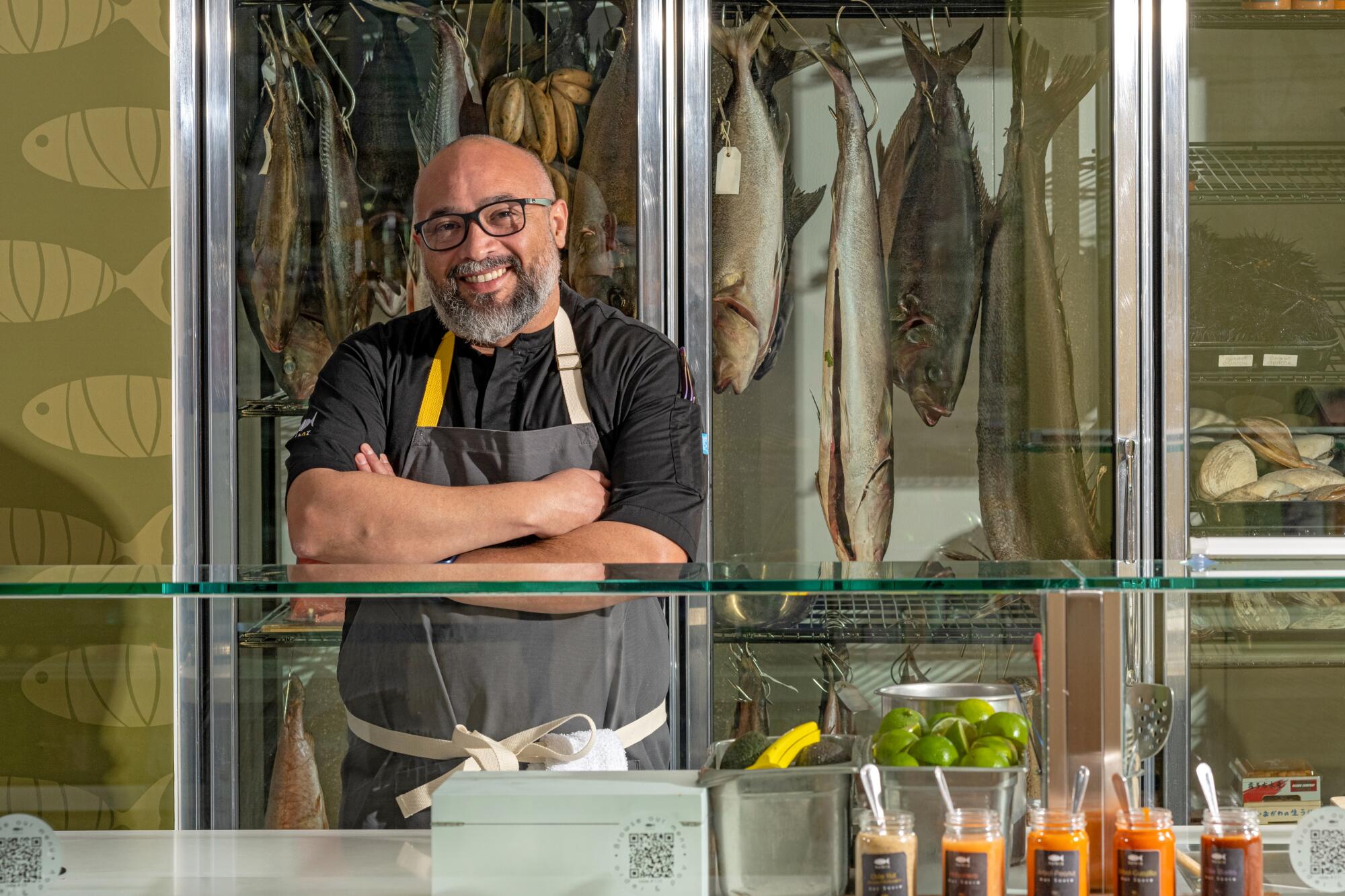
Why we chose the newly expanded mariscos stand in Historic South-Central’s Mercado la Paloma as our Restaurant of the Year.
Gilberto Cetina did both. He started in the business when he helped out at his father’s Yucatecan restaurant Chichén Itzá in the Mercado La Paloma near USC and now runs the restaurant, which continues to serve panuchos, cochinita pibil and other classic dishes. But in 2017 he built out a space in the same food hall as Chichén Itzá and opened Holbox, a polished, almost sushi-bar-like counter where he serves his own L.A. style of gorgeous Mexican seafood dishes. On Thursdays and Fridays he offers an intimate tasting menu where he can interact directly with customers. Critics all over the country have taken notice, including Times restaurant critic Bill Addison, who named Holbox this year’s Restaurant of the Year, an honor that will officially be awarded at a sold-out celebration dinner Sept. 13 during the monthlong L.A. Times Food Bowl festival. (Cetina will also appear with his Chichén Itzá crew at the first night of Food Bowl’s Night Market on Sept. 22 and will serve tastes from Holbox on Sept. 23.)
In this video series, learn from L.A.’s top chefs as they show us how to make their favorite dishes, and find out how you can meet them this fall at the L.A. Food Bowl.
Carlos Salgado, who grew up surrounded by traditional Mexican cooking at his parents’ restaurant, La Siesta in Orange, brought an artisan chef’s approach to Mexican cuisine at Taco María (now on hiatus as he seeks a new space) and was this paper’s 2018 Restaurant of the Year.
Meanwhile, when Bricia Lopez and her siblings Fernando Jr., Paulina and Elizabeth took over Guelaguetza, the pioneering Oaxacan restaurant founded by their parents, Fernando Lopez and Maria de Jesus Monterrubio, they kept the menu largely the same in an effort to preserve the flavors of their heritage. Instead, they have focused on spreading the word about Oaxacan cuisine not only through the restaurant but through cookbooks by Lopez and with their I Love Micheladas line of michelada mixes and From Oaxaca to You brand of mole sauce starters.
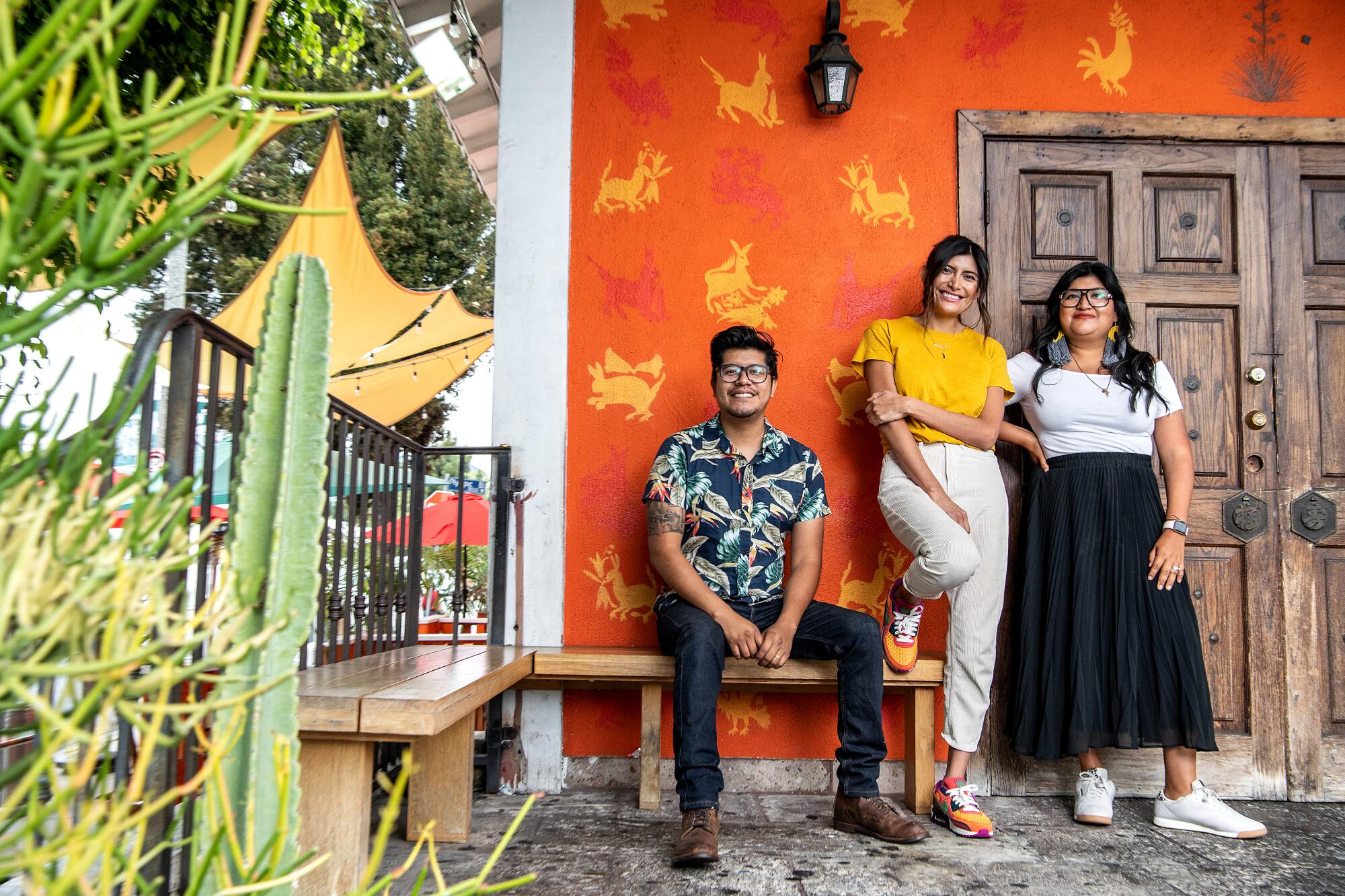
The Times’ Restaurant of the Year gives us a perfect model.
You’ll find the generational shifts in all pockets of the city. Carole Iida-Nakayama, who works with her wife, Niki Nakayama, at their Michelin-starred n/soto, grew up at her parents’ Mako Sushi in Arcadia. Greg Dulan, who is reopening Dulan’s on Crenshaw and was nominated this year for a James Beard Award as outstanding restaurateur, learned tough-love lessons from his father, Adolf, who was known as Los Angeles’ “king of soul food.” His dad effectively fired him from the family restaurant, telling him to go out on his own and learn the catering side of the business. Most recently, Dulan teamed up with Kim Prince — a daughter of the family who brought the world Nashville hot chicken — when she lost her Hotville Chicken space. Together, they started the Dulanville food truck, which appears regularly at Smorgasburg L.A. and other events (including all three nights of Food Bowl’s Night Market this month) .
Of course, the chef who may most embody the possibilities of the blending of restaurant generations is Justin Pichetrungsi of Anajak Thai, 2022’s L.A. Times Restaurant of the Year. Most nights, he still serves many of the classic Thai dishes his father made for the neighborhood, augmented with an ever-growing collection of wines from small producers and makers of natural wines. But on weekends, these days once a month, he does an all-out seasonal tasting menu that is one of the city’s most in-demand reservations, while on Tuesday nights, he goes full egalitarian with his no-reservations Thai Taco Tuesdays. Cooking on outdoor grills, he serves with an evolving menu that often goes beyond fish tacos. If you arrive early enough and don’t mind waiting in line or drinking from plastic cups outdoors with your fellow Angelenos, you will have one of the great L.A. eating experiences.
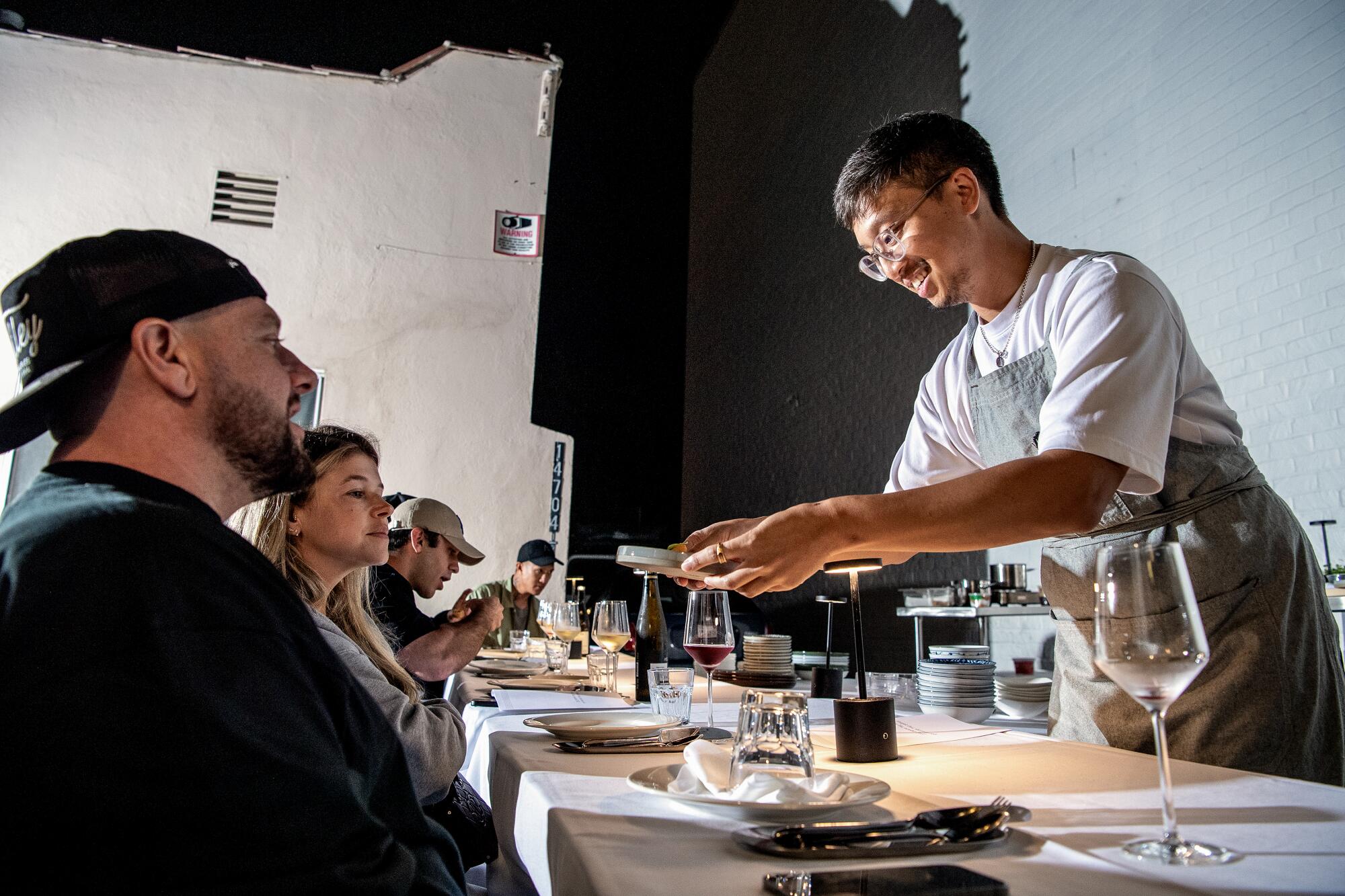
When asked about the L.A. nature of his place, Pichetrungsi says, “Some people came in recently and told me, ‘This could only happen here in L.A.’ And I was really pondering that. Is that true? Could Anajak only exist in L.A.? I’d like to think not. But maybe the answer is yes. Maybe it is the confluence of the great diaspora of Thai cuisine, Mexican cuisine and Chinese cuisine all happening all the same time. I get to have influences from all of these cultures and bring them in where I see fit.
“My take on Anajak was to look at the neighborhood Thai restaurant through the prism of a kaleidoscope. You see multiple facets at once. On one angle, it exists as the neighborhood Thai spot. On another angle, there are the potentials of what a fine-dining or a tasting-menu restaurant could be. I’m not saying it’s the perfect version of it at all. I’m saying let’s poke at that thread.
“With Taco Tuesday, we’ve got what it would be like if it was a counter-service, street-food situation. And then we’ve just explored this idea of like barbecue nights. Every time I look through the prism, I see more ideas. And the more times I look through it, the more my cooks go, ‘Oh, no, no, no, don’t do another one.’”

Armen Martirosyan, who returned to his family’s Glendale restaurant Mini Kabob after a time away from the business and is now expanding the operation, sees this next phase of L.A. restaurants as part of the American dream.
“Our parents came to this country to give us a better life,” he says, “to give us the freedom to do what we wanted. I think their perspective was, ‘We have a family, we have mouths to feed, just get them fed. Let’s create a business. Let’s do enough to just take care of our families.’
“For us as their children, it’s like, ‘OK, we’re here now. We were born here and we need to evolve the business.’ They gave us the foundation. Now it’s on our shoulders to carry our businesses to another level and to create a better and more sustainable life for our future children.”
These game changers in the culinary industry will be serving up their signature dishes at our annual September food events.
More to Read
Eat your way across L.A.
Get our weekly Tasting Notes newsletter for reviews, news and more.
You may occasionally receive promotional content from the Los Angeles Times.
